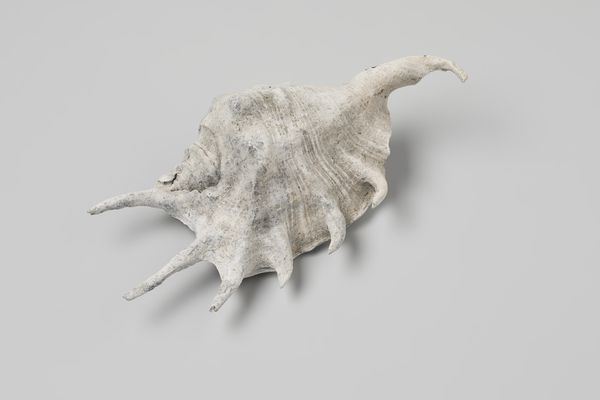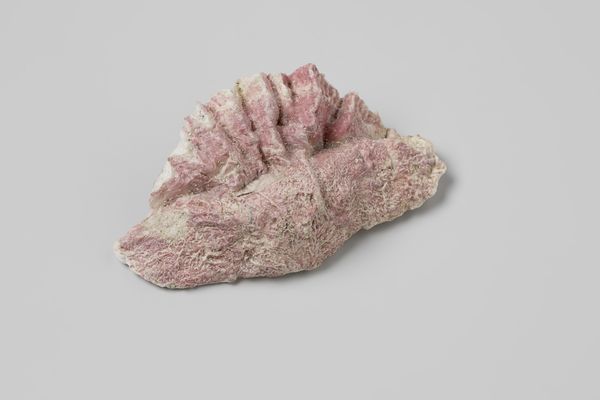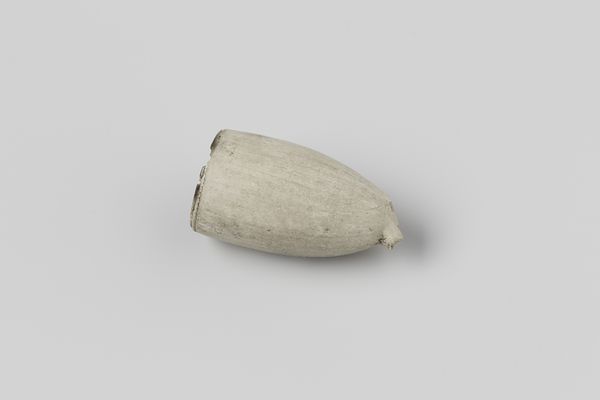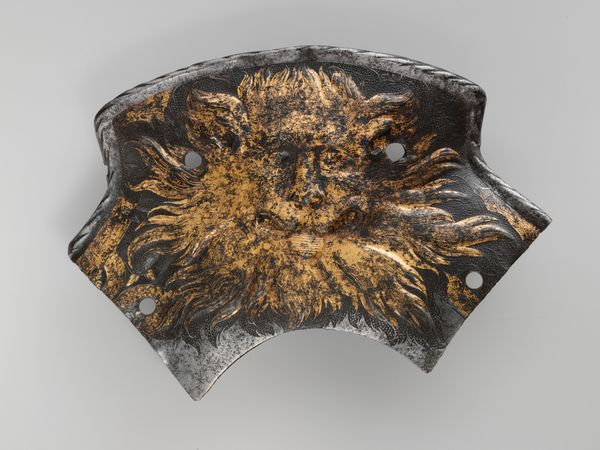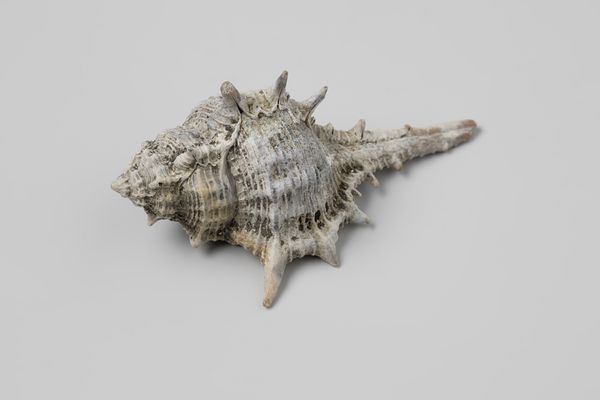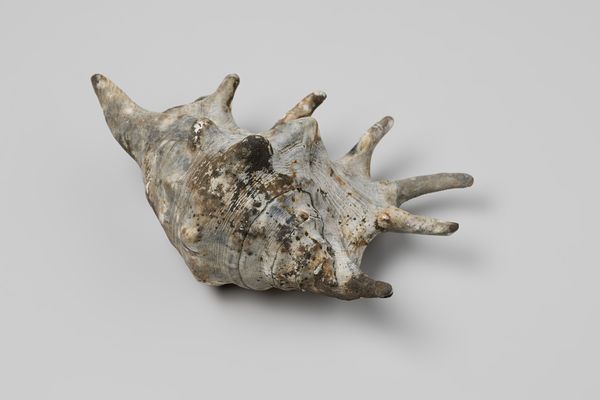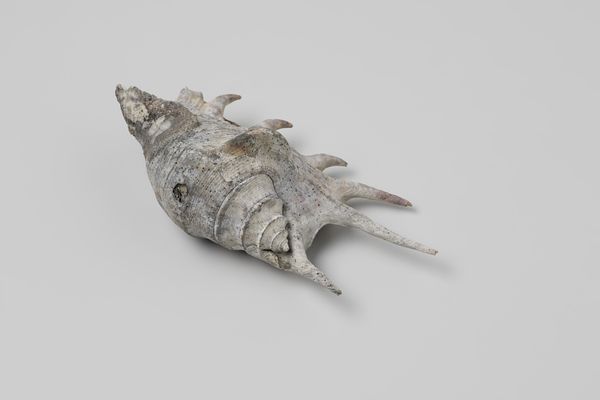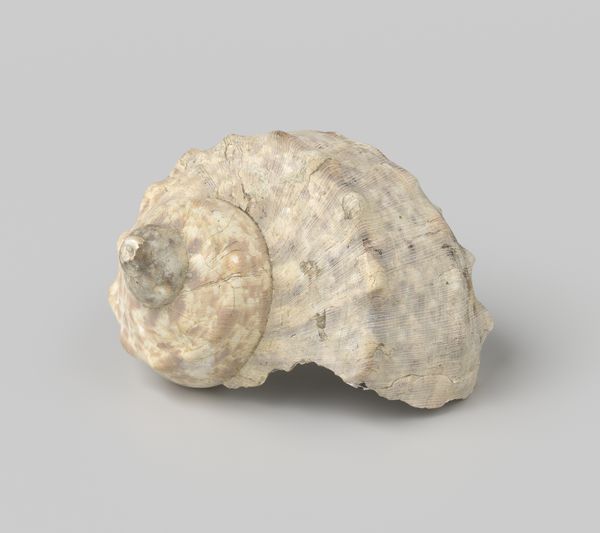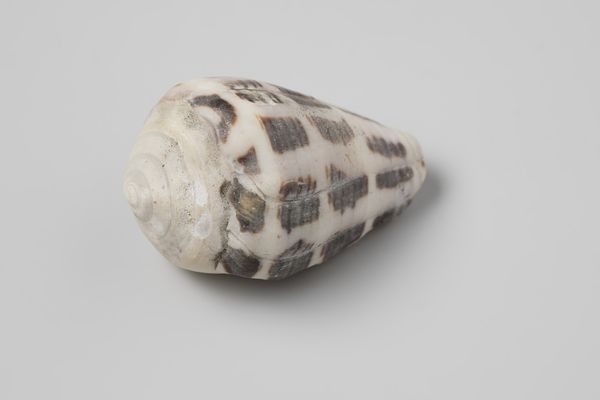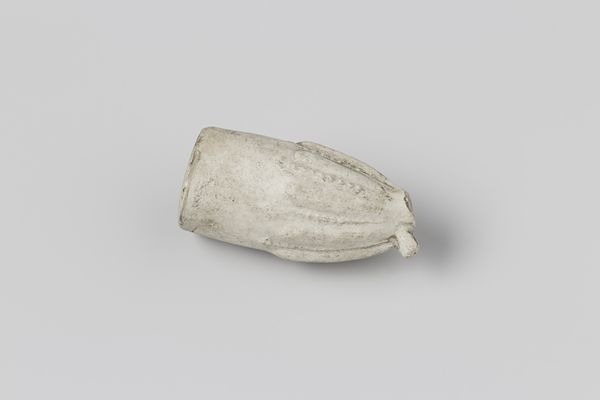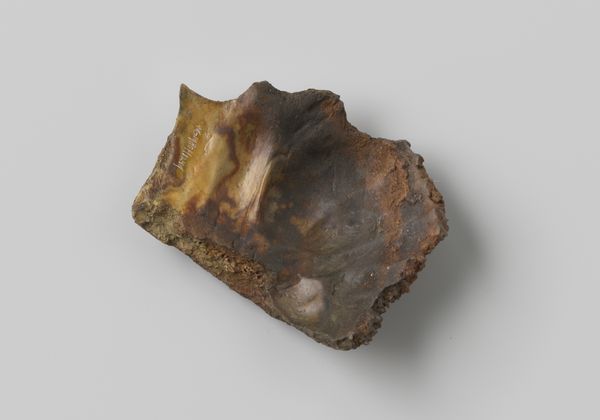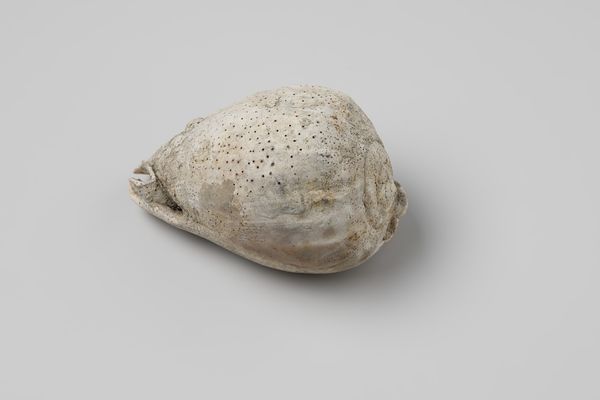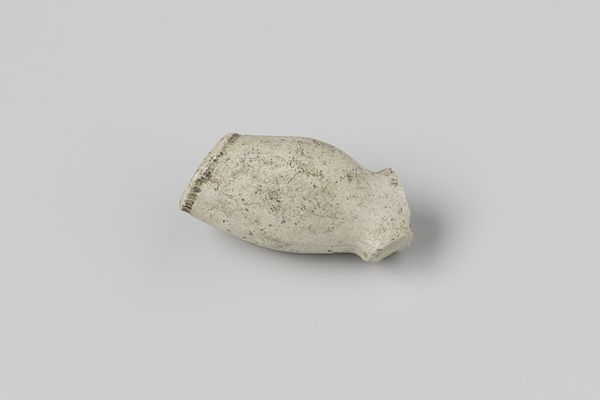
Crassostrea cristagalli shell from the wreck of the Dutch East India ship Witte Leeuw before 1613
0:00
0:00
sculpture
#
sculpture
#
ceramic
Dimensions: length 6.5 cm, width 7.1 cm, height 3.1 cm
Copyright: Rijks Museum: Open Domain
This is a Crassostrea cristagalli shell, or rooster comb oyster. This one was recovered from the wreck of the Dutch East India ship, Witte Leeuw, which sank in 1613. The shell wasn’t made, of course, it grew. But its presence in the Rijksmuseum asks us to consider its role in a network of global trade and exploitation. Think about how the shell came to be on the ship. Perhaps it was a curiosity collected by a sailor, or part of a cargo shipment. This little object speaks to larger issues of labor, politics, and consumption. Its intricate form, created by the slow accretion of calcium carbonate, is a testament to the power of natural processes. Yet, its presence in this collection is inseparable from the story of colonialism and the environmental impact of global commerce. By recognizing the social and historical context embedded in this humble shell, we can move beyond traditional distinctions between natural history and art history, and understand how objects from the natural world are intertwined with human endeavor.
Comments
No comments
Be the first to comment and join the conversation on the ultimate creative platform.
